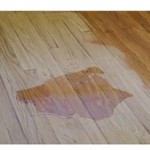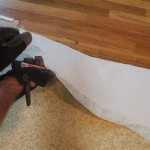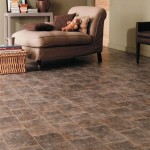Vinyl flooring is a great option for many homeowners because it is easy to install, durable, and cost-effective. Adding vinyl flooring over an existing tile floor can add a fresh, new look to any room in the house. The process is relatively simple and it can be completed in a few easy steps. In this guide, we’ll walk you through the steps for installing vinyl flooring over tile, as well as discuss the advantages and disadvantages.
Steps for Installing Vinyl Flooring Over Tile
Installing vinyl flooring over tile is a straightforward process that can be completed in just a few simple steps. First, you’ll need to prepare the existing tile floor. This involves cleaning and leveling the surface. Be sure to use a vacuum to remove all dust and debris, and then use a level to ensure that the surface is even. If there are any bumps or dips in the surface, you’ll need to use a trowel or grout to fill in these areas.
Once the existing tile floor is prepped, you’ll need to measure the area and cut the vinyl flooring to fit. This can be done using a utility knife or a vinyl cutting tool. You’ll then need to apply the adhesive to the back of the vinyl flooring and press it into place. It’s important to make sure that the adhesive is evenly distributed and that the vinyl flooring is firmly secured to the tile floor.
The last step is to apply a sealant to the edges of the vinyl flooring to prevent moisture from seeping into the seams. This will help keep the vinyl flooring looking great for years to come. Once the sealant has been applied, you’re ready to enjoy your new floor.
Advantages of Installing Vinyl Flooring Over Tile
Installing vinyl flooring over tile offers a variety of advantages. For one, it’s a relatively inexpensive option when compared to other flooring materials. It’s also easy to install and maintain, and it’s highly durable. Vinyl flooring is also water-resistant, so it’s a great choice for bathrooms and kitchens. Finally, vinyl flooring comes in a variety of colors and patterns, so it’s easy to find a look that fits your style.
Disadvantages of Installing Vinyl Flooring Over Tile
Although vinyl flooring can be a great option for many homeowners, there are also some potential drawbacks. For one, vinyl flooring can be slippery when wet, so it’s not the best choice for areas that may be exposed to water. Additionally, vinyl flooring tends to fade over time, so it may not be the most long-lasting option. Finally, vinyl flooring is susceptible to scratching and scuffing, so it may not be the best choice for high-traffic areas.
Conclusion
Installing vinyl flooring over tile can be a great way to add a fresh, new look to any room in the house. The process is relatively simple and it can be completed in just a few easy steps. There are a variety of advantages to installing vinyl flooring over tile, including its affordability, ease of installation and maintenance, and water-resistance. However, there are also some potential drawbacks, such as its susceptibility to scratching and fading. Overall, vinyl flooring is a great option for many homeowners, and it can add a touch of style and sophistication to any room.















Related Posts








